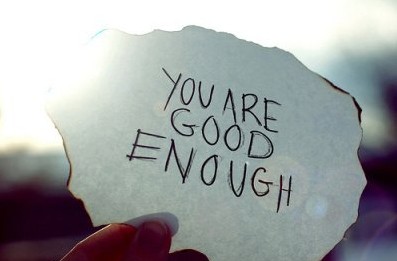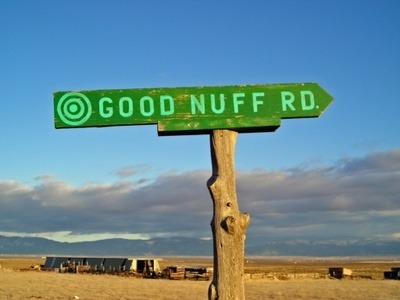Meditation can yield spectacular insights about ourselves and the nature of the universe. It also often brings awareness of the patterns we repeat in our minds. Time and time again, we find ourselves alighting on thoughts that look suspiciously like loops. These are the backing tapes of the conscious mind and they often go something like this:

These traps often focus on current situations in our lives, work worries, romance worries, issues of powerlessness and frustration. These are the ‘problems’ that are the easiest to fixate on, but more often than not the fixation results only in stress, in an escalation of tension, in the metaphoric banging of heads against brick walls, and not in anything remotely resembling solutions. As Einstein said:
We can not solve our problems with the same level of thinking that created them.
The worry often seems to emerge out of nowhere, or from the stillness of meditation itself. The bored mind, in uncharted waters stalks its next dopamine fix: “This is a problem… I should do something.” This rarely ends well. In fact, this kind of bored mind is not particularly good at coming up with solutions. Solutions often come from somewhere else entirely, some deep unknowable unconscious room… [or other more appropriate esoteric metaphor].
Anyway, with meditation, the idea is to go on dropping out of these traps, right? So they emerge and we recognise them and then go back to whatever practice we were attempting. We go back to focusing on our breathing or whatever. But sometimes there is actually a great opportunity here to deepen awareness, to deepen practice and to go meta on this stuff. Sometimes it happens accidentally. The conscious/beta mind is being dropped, the repetitive patterns of tension/traps are recognised and then we catch a glimpse of a bigger picture, of a bigger pattern.

The normal conscious beta mind can’t really do this, you need an altered state. But when you do get a glimpse here it is a beautiful and rare moment of clarity, of seeing the forest for the trees, of realising that most of the time we are just looking at a couple of pixels out of a massive screen and interpreting the world from a ridiculously narrow perspective. It’s interesting that it is the traps themselves that often provide a gateway for this kind of experience. The tension they create – the tension of contradiction – provides a platform for noticing… and a potentially transformative space.
 I think of shadow work as stumbling in the dark, like the le Guin’s priestess in her underground labyrinth, there is danger in rushing in: the danger of being lost to the blackness, of starving to death. We have to feel our way, to edge carefully around the walls until we learn the map. Then we can be at home in the dark landscape of unconsciousness. That is why the work is worth doing: because when you face the most terrifying parts of self, there is nothing left to fear and as if we can process these things in the light of consciousness, they don’t need to manifest externally.
I think of shadow work as stumbling in the dark, like the le Guin’s priestess in her underground labyrinth, there is danger in rushing in: the danger of being lost to the blackness, of starving to death. We have to feel our way, to edge carefully around the walls until we learn the map. Then we can be at home in the dark landscape of unconsciousness. That is why the work is worth doing: because when you face the most terrifying parts of self, there is nothing left to fear and as if we can process these things in the light of consciousness, they don’t need to manifest externally.



 “I’m good enough” is digestible. It’s believable. It’s no great commitment, no great pressure. It’s acceptable, and it’s honest. There’s nothing wrong with being a good-enough mother, a good-enough daughter, or granddaughter or student or academic or writer or any of the other labels people tend to accumulate in their short lives. It is a calm, contented centre in an otherwise chaotic storm of great vulnerability, expectations and obligations. It’s an in-between road that is not a dead-end or wild goose-chase shortcut. It’s just a simple breath of fresh air. I’m good… enough. It’s an invitation to let go.
“I’m good enough” is digestible. It’s believable. It’s no great commitment, no great pressure. It’s acceptable, and it’s honest. There’s nothing wrong with being a good-enough mother, a good-enough daughter, or granddaughter or student or academic or writer or any of the other labels people tend to accumulate in their short lives. It is a calm, contented centre in an otherwise chaotic storm of great vulnerability, expectations and obligations. It’s an in-between road that is not a dead-end or wild goose-chase shortcut. It’s just a simple breath of fresh air. I’m good… enough. It’s an invitation to let go.
 This is a time of letting go. It has been a frustrating and transformative couple of years. Today is about endings, about letting go, mourning the death of the old paradigm and making space… and resting… and allowing the new to arise. Today is a good time for acceptance, for allowing, for letting things be. Today, “good enough” is enough… and probably, tomorrow it will be too.
This is a time of letting go. It has been a frustrating and transformative couple of years. Today is about endings, about letting go, mourning the death of the old paradigm and making space… and resting… and allowing the new to arise. Today is a good time for acceptance, for allowing, for letting things be. Today, “good enough” is enough… and probably, tomorrow it will be too.




 The normal conscious beta mind can’t really do this, you need an altered state. But when you do get a glimpse here it is a beautiful and rare moment of clarity, of seeing the forest for the trees, of realising that most of the time we are just looking at a couple of pixels out of a massive screen and interpreting the world from a ridiculously narrow perspective. It’s interesting that it is the traps themselves that often provide a gateway for this kind of experience. The tension they create – the tension of contradiction – provides a platform for noticing… and a potentially transformative space.
The normal conscious beta mind can’t really do this, you need an altered state. But when you do get a glimpse here it is a beautiful and rare moment of clarity, of seeing the forest for the trees, of realising that most of the time we are just looking at a couple of pixels out of a massive screen and interpreting the world from a ridiculously narrow perspective. It’s interesting that it is the traps themselves that often provide a gateway for this kind of experience. The tension they create – the tension of contradiction – provides a platform for noticing… and a potentially transformative space.